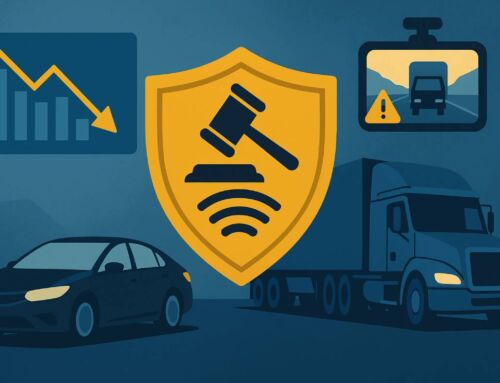
In 2025, the insurance landscape is evolving at breakneck speed. From shifting customer expectations to intensifying competition from insurtech startups, independent insurance agents must continually adapt to stay relevant. One of the most transformative trends reshaping the industry is the integration of artificial intelligence (AI) and predictive analytics. By embracing these technologies, agents can deepen client relationships, streamline operations, and identify new revenue opportunities—ultimately positioning their agencies for sustainable growth in a data-driven marketplace.
1. Why AI and Predictive Analytics Matter Right Now
- Elevated Customer Expectations
Clients today demand hyper-personalized experiences—whether shopping for auto, home, or commercial coverage. They expect quick quotes, tailored recommendations, and seamless digital interactions. AI-powered tools can analyze vast datasets (e.g., driving behavior, weather patterns, claim histories) to craft individualized policy suggestions in real time. - Competitive Pressure from Insurtechs
Venture-backed insurtech startups are aggressively leveraging machine learning algorithms to underwrite policies faster and more accurately. Independent agents who resist this shift risk ceding market share to digital-first competitors. Integrating AI allows agents to maintain their consultative edge while harnessing the efficiency of technology. - Regulatory and Compliance Benefits
Predictive analytics can help flag potential fraud or compliance red flags early in the underwriting process. As regulatory scrutiny intensifies around issues like data privacy and anti-money laundering, AI-driven risk models can support agents in meeting stricter compliance requirements without sacrificing speed.
2. Key Applications of AI for Agents
- Automated Lead Scoring & Prioritization
- AI platforms can ingest CRM data, social media signals, and website behavior to rank prospects by likelihood to convert.
- By focusing on the highest-value leads, agents can improve close rates and reduce wasted effort.
- Dynamic Underwriting & Risk Assessment
- Machine learning models analyze historical claims, telematics data, and even satellite imagery (for properties in high-risk zones) to deliver more accurate risk scores.
- Faster, data-backed underwriting helps agents secure better terms for their clients and upsell value-added endorsements (e.g., water-leak sensors, wildfire mitigation coverage).
- Personalized Marketing & Cross-Sell Opportunities
- Predictive analytics can uncover patterns in existing clients’ behaviors—such as a homeowner nearing expiration on their umbrella policy or a driver approaching a mileage threshold.
- Agents can then craft targeted outreach (email, text, or phone) suggesting relevant add-ons (e.g., cyber liability, roadside assistance) just as policyholders are most receptive.
- Chatbots & Virtual Assistants
- AI-driven chatbots can manage routine inquiries (e.g., “What’s my deductible?” or “How do I file a claim?”) around the clock.
- This 24/7 availability not only enhances customer satisfaction but frees up agents to focus on higher-value consultative tasks.
3. Overcoming Implementation Challenges
- Data Quality & Integration
Before deploying AI tools, agents must ensure their existing data (from agency management systems, CRM platforms, and third-party sources) is clean, normalized, and compatible. Partnering with vendors who specialize in seamless API integrations can significantly reduce friction. - Training & Change Management
Staff may be wary of new technologies that seem to “replace” human judgment. To alleviate concerns, position AI as a “digital assistant” that augments, rather than replaces, an agent’s expertise. Invest in hands-on training sessions and designate internal “AI champions” to guide adoption. - Cost Considerations
While some enterprise AI solutions carry hefty price tags, there are scalable, subscription-based platforms tailored for independent agents. Start with pilot programs—such as AI-driven lead scoring—to prove ROI before rolling out agency-wide.
4. Real-World Success Stories
- Case Study: Midwestern Agency Sees 30% Increase in Cross-Sales
An independent agency in Chicago implemented a predictive marketing platform that flagged clients likely to benefit from flood insurance. Over the next 12 months, the agency saw a 30% lift in cross-sell revenue. Moreover, policyholder retention improved by 12% as clients appreciated the proactive guidance. - Case Study: Virtual Claims Triage Slashes Response Times
A boutique agency in Texas integrated an AI chatbot on its website to handle initial auto-claim intake. The chatbot gathered basic information, attached relevant photos, and pre-screened potential fraud indicators. As a result, the agency’s average claims response time dropped from 48 hours to under 12 hours—enhancing client satisfaction and operational efficiency.
5. Practical Steps to Get Started
- Audit Your Data Infrastructure
• Identify your core data sources: agency management system, CRM, third-party feeds (e.g., LexisNexis, Experian).
• Cleanse and standardize existing records (e.g., remove duplicate contacts, validate policy details). - Pilot a Single Use Case
• Choose a high-impact, low-complexity project—such as lead scoring or targeted cross-sell email campaigns.
• Evaluate multiple vendors, request proofs of concept, and measure performance against clear KPIs (e.g., lead conversion rate, email open/click-through rates). - Train Your Team & Iterate
• Schedule interactive workshops to familiarize agents with the chosen AI tools.
• Collect feedback regularly and refine processes (e.g., adjust model thresholds, update data inputs). - Scale Across the Agency
• Once the pilot achieves positive ROI, expand to additional functions: dynamic underwriting, virtual assistants, claims triage.
• Use success stories to build internal buy-in and encourage wider adoption.
6. The Future of AI in Insurance: What Agents Should Watch For
- Hyper-Personalized Policies
AI may soon enable on-demand, usage-based policies that adjust premiums in real time based on customer behavior (e.g., auto policies that track driving habits at the minute level). - Blockchain-Enabled Smart Contracts
While still in nascent stages, blockchain could power self-executing policies that trigger automatic payouts when predefined conditions are met—streamlining claims and reducing disputes. - Ethical AI & Explainability
Regulators are increasingly scrutinizing “black box” algorithms. Agents should prioritize vendors that offer transparent, explainable AI models to avoid potential compliance pitfalls.
Conclusion
By embracing AI and predictive analytics, independent insurance agents can transcend traditional limitations—delivering faster, more personalized service while uncovering new growth avenues. Whether you’re a solo agent or part of a regional brokerage, now is the time to explore data-driven tools that complement your trusted advisory role. At Agents United, we empower independent agents with the resources and partnerships needed to integrate cutting-edge technologies seamlessly. Join our network and leverage our collective expertise to stay ahead in the AI-powered insurance era.




